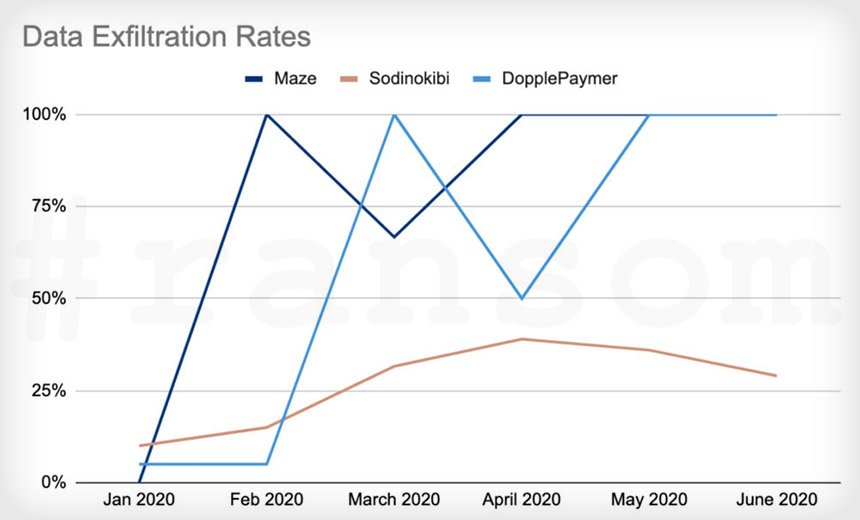Closing The Tech Skills Gap: 3 Key Factors For CEOs To Consider

Limited resources and tightened budgets have placed restrictions on hiring new
talent and several industries were left scrambling to reskill and quickly
adapt. While hiring new talent seems like a valid solution, in reality, the
hiring, onboarding and culture development process requires a significant
amount of time and dedication, impacting the overall company’s output. As
enterprises continue to identify ways to do more with less now is an opportune
time for reskilling and upskilling initiatives to become part of the “new
norm.”Reskilling and upskilling initiatives are not only beneficial to
employees but impactful to the enterprise. According to a recent study, nearly
30% of employees feel their skills will be redundant within the next two
years, with 50% of those in Gen-Y and Gen-Z indicating that their skills will
be irrelevant within the next four to five years. Although technology tends to
create more jobs than it takes away, those fears are still incredibly
prevalent. A workforce of the future must be prepared to welcome change and
remain agile, they also must have the support and resources to further enhance
their skills. Furthermore, employees will find comfort in knowing their
company wants to invest in them and their future—and loyalty will likely
follow.
Stretch or safe? The art of setting goals for your teams

With so little clarity about the future, how can leaders set business goals
for the next six months to a year? During the dozen years between the 2008
financial crisis and the current pandemic, the world seemed far more stable,
and budgeting was more of a predictable process. But now? Who knows. We are
living in an era of VUCA, an acronym coined by the U.S. Army War College that
stands for volatility, uncertainty, complexity, and ambiguity. This
uncertainty is raising new challenges for a fundamental leadership skill: goal
setting. It is as much an art as a science, because it requires finding the
sweet spot between the aspirational and the realistic. Yes, there is something
galvanizing and inspirational about a big stretch goal, as President John F.
Kennedy knew in 1961, when he announced that the United States would put a man
on the moon by the end of the decade, even though the longest time any
American had spent in space was barely 15 minutes. The business leader’s job
is to set an ambitious target that will bring out the best in a company’s
teams and achieve what may seem impossible at first. These are the BHAGs — or
big, hairy, audacious goals, in the words of Jim Collins, the author of Good
to Great and other books.
Can AI help with your quest for global talent?

For candidates, AI can help to eliminate some of the most problematic human
flaws in the recruitment process: hiring bias. Although often unintentional,
stereotypes and personal prejudices are something which even the most
conscientious recruiters can fall foul of. AI allows for blind applicant
screening and levels the playing field. Chatbots can also help to improve the
candidate experience and engagement by offering immediate replies to inquiries
or queries, simple job applications and ongoing assistance throughout the
process. Employers and HR personnel can benefit massively from AI, too. For
starters, it can be used to scan CVs for certain keywords to shortlist the
most suitable candidates intelligently. Predictive analysis can even determine
which candidates are more likely to succeed in the roles — helping to improve
the quality of the hire and ensure only the most retainable talents are
brought on board. AI can also help companies reach passive candidates who
aren’t actively seeking a new role — which can often be one of the best
applicant pools. In the past, reaching these candidates involved poring
through CV databases, lots of cold-calling and even more dead ends.
99 Ransomware Problems - and a Decryptor Ain't One

Security experts say that more organizations have been putting in place viable
defenses against ransomware, including frequently backing up all systems, and
storing those backups offline. As a result, if they suffer a ransomware
infection, they can simply wipe systems and restore from backups, without
having to even consider paying a ransom. In response, beginning in November
2019, the Maze gang began exfiltrating data before crypto-locking systems,
then using the threat of data leaking to try and force more victims to pay.
Unfortunately, this strategy not only worked, but has been emulated by
numerous other gangs ... Unfortunately, the move to exfiltrate data,
name-and-shame victims and so on has been leading to higher profits for
criminals. In numerous recent cases, despite being able to fully restore data
from backups, victims have then felt "compelled to have to engage in an
extortion negotiation and potentially a payment to a threat actor because of
the potential for what they deemed to be irreparable harm to their business if
the information is leaked, and so they end up paying to prevent that," says
Coveware CEO Bill Siegel.
The New Capabilities in Endpoint Security for Businesses

Surprisingly, endpoint security evolved perhaps the most of any branch of
cybersecurity. After all, look at the history of these critical business-level
solutions. First, the only needed to protect a determined set of physical,
on-premises devices from known malware and viruses. A simple antivirus
solution could do the trick many times over. However, enterprises face an
increasingly complex IT and device environment that in no way resembles ages
past. For example, you need to contend with the increased necessity of remote
work in the wake of COVID-19; in fact, these changes might result in permanent
reassessments of work-from-home policies. That means new endpoints operating
on personal Wi-Fi or public Wi-Fi connections, both of which pose
cybersecurity challenges in terms of visibility and
consistency. Additionally, those endpoints connecting to corporate
networks are also undergoing changes. No less an authority than Gartner noted
that bring-your-own-devices (BYOD) as a term may not adequately describe the
situation. It might more accurately be summarized as Bring-Your-Own-PC
(BYOPC), which adds another layer of endpoint security complexity.
How Diffblue uses AI to automate unit testing for Java applications

The irony, as Diffblue CEO Mathew Lodge pointed out in an interview, is how
late the software industry is in embracing AI to improve software development,
given how we've used AI to automate and disrupt so many other industries--from
retail, travel, transportation, manufacturing, and more. Lodge said Diffblue
researchers took advantage of the machine learning strategy that powered
AlphaGo, Alphabet subsidiary DeepMind's software program that beat the world
champion player of Go. While the company is starting with a Java solution (by
far the most popular language in the Global 2000 where companies invest
heavily in productivity tools), its technology can also be used to automate
testing for most programming languages such as Python, JavaScript, and C#,
among others. Among the first customers to roll out Diffblue's solution
is Goldman Sachs (with an annual IT budget larger than many countries' GDP).
Using Diffblue's AI on one module with an important backend system, Goldman
Sachs was able to expand existing unit test coverage from 36% to 72% in less
than 24 hours, a feat that would have required more than eight days of
developer time if done manually. Developer time savings? 90%.
The Cloud Is Not The Edge

Over the last 15 years, we have seen major growth in social and mobile
categories and SaaS offerings. Most recently, a new technology has emerged
called the internet of things (IoT), and it demands a new type of computing
called edge computing. Today, as we shift from doing all processing on
Amazon Web Services or Microsoft Azure computers and move it to our
businesses, construction zones, farms and trucks, we hear that edge computing
will be “bigger than the cloud.” This new type of computing will provide
augmented reality for remote service, real-time monitoring of equipment in the
field, optimizations for natural resources and machine-learned energy
efficiencies, among other returns. While it’s tempting to believe we can just
move our cloud applications to the edge, this is not possible. Furthermore,
companies that take such a strategy will struggle for years to come because
the cloud is fundamentally different from edge computing. ... Edge-native
architectures should expect a diverse infrastructure for deployment. This
means that edge applications should easily run on bare metal processors,
virtual machines and containers. Conversely, cloud offerings and services are
built and heavily tuned for a single type of environment and cannot run
anywhere.
Low-Code Revolution to Prepare Manufacturers for Industry 4.0
Manufacturing Industry is experiencing a digitization move. Manufacturing Sector
has already adopted digital technologies like artificial intelligence, augmented
reality, robotics, additive manufacturing, etc. These technologies had enabled
them to have a competitive advantage in terms of manufacturing efficiency and
cost. Due to pandemic traditional supply chains and manufacturing
environments are crumbling, so there is a need to move towards a
digitally-driven, more flexible agile approach. In these challenging times, many
of the leading companies are innovating and developing their applications.
Businesses that tailor their existing technical capability and resources on
digital technology can limit the COVID-19 ‘s impact. In times like these when
there are limited resources and less time to build applications for business
continuity, businesses are relying on Low-Code technology to create and pilot
new applications for business continuity at rapid rates. Low Code platforms are
becoming popular among manufacturing companies as they deliver customized
solutions and offer flexibility, scalability, and efficient technological
innovation.
Five lessons for digital transformation success

Developing the right talents and skills is one of the important transformation
initiatives. While some people might immediately say digital technologies are
the key success factor, those who are experienced in the process would say
that’s not necessarily so. Chan Suh, chief digital officer of business
transformation specialist Prophet, warns against being seduced by the promises
of technology’s magical tools for creating revenue growth. While businesses
may need digital innovations such as artificial intelligence for deep insight,
tech stacks are just tools and, without the right operating instructions, they
either lie fallow or become money pits. Suh says it’s a mistake that has cost
global businesses billions of dollars in wasted investments. “We need the
conceptual strategies and innovations to guide our tech investments as well as
the human expertise to use it properly. However, that human expertise is
especially rare when it comes to navigating the highly complicated
interdependencies of digitally powered businesses,” he says. With building
capability, the key is the right mix of human expertise and technology working
in a coherent, flexible operating model with the customer at the centre.
Delivering on your promises

Bertini and Koenigsberg make an impassioned and ambitious case for rewriting the
rules of commerce. They argue that although customers want to buy a solution to
a “job that needs to be done” (in the words of Clay Christensen), they’re
offered only the means to buy that solution, typically by taking ownership of a
product. This is due to a “a combination of neglect, inertia, fear of change,
and comfort with the status quo” on the part of companies. Buying a product
(e.g., an engine) isn’t always a good proxy for the end goal (e.g., reliable
high performance). Reserving particular wrath for healthcare, education, and
advertising, the authors focus on three forms of waste in the exchange between
companies and customers: (1) access — customers can’t get the product (e.g., a
car) they want because of the cost or a lack of stock; (2) consumption — they
don’t or can’t use what’s offered (e.g., bundles of TV programs or a car that
sits unused 90 percent of the time); and (3) performance — the product doesn’t
deliver the value customers expect. “Lean commerce,” in which the fortunes of
companies depend explicitly on delivering value to the customer, is a much more
efficient model. To determine value, the authors use an end or outcome that can
be easily understood, verified, and quantified. Feeling happy or amused is hard
to measure, but measuring a laugh is easier.
Quote for the day:
"When Things Fall Apart " is when we usually have the most to learn about ourselves." -- Oprah
No comments:
Post a Comment